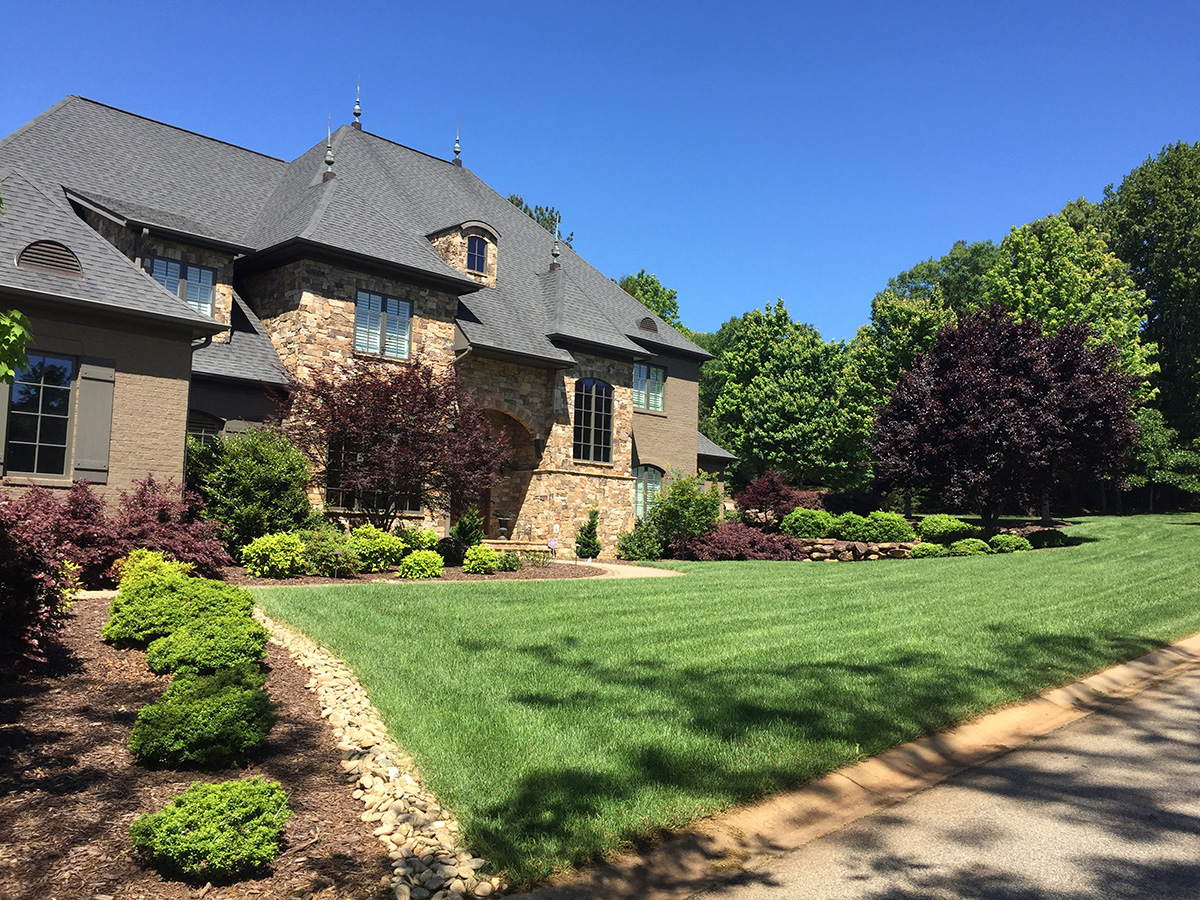
By Sarah Browning, Extension Educator in Lancaster County
The best time to seed cool season grasses, such as Kentucky bluegrass and tall fescue, is between Aug. 15 and Sept. 15, so it’s time to get started! And given all the drought damage our lawns have suffered in the last two years, many are in need of repair — in the form of overseeding.
Getting your seeding done as early as possible is really important, because each week of delay in seeding translates into 2–4 additional weeks required for the grass to mature in fall. It is critical to seed tall fescue no later than mid-September; tall fescue seedlings take a longer time to develop cold hardiness.
Fall is, in fact, the best time of year for seeding lawns due to a combination of factors. First, there’s less weed pressure than in spring and less rain in late summer making soil preparation easier to complete. Plus, the extended period of cool fall weather is ideal for growth of cool-season turfgrasses.
GETTING STARTED
Total Renovation — If you need to renovate the entire lawn, start by killing the remaining grass and weeds with glyphosate (RoundUp), then wait for 10–14 days before seeding. Difficult weeds may need a couple applications to kill completely, so get started early. Next, mow the dead vegetation as short as possible and move on to soil preparation.
Overseeding — If you just need to fill in thinned areas, and still have more than 50% good turf, then overseeding is the answer. Skip the RoundUp, but mow the existing grass fairly short, 2.5–3 inches tall, to make the next step — soil preparation — easier.
Soil Preparation — Prepare the seedbed through aerification, making at least three passes over the lawn. You need to produce lots of bare soil, so the seed can make contact with it. Watering the lawn area a day or two beforehand will make aerification easier and allow the machine to take deeper cores.
Fertilization — Nebraska soils are rarely low in phosphorus, but turfgrass seedlings do benefit from a starter fertilizer high in phosphorus at seeding. Once the area is prepared, apply a starter fertilizer totaling 1–1.5 lbs phosphorus/1,000 sq. ft.
Phosphorus is the second number in the fertilizer ratio. For example, a 16–22–8 product contains 22% phosphorus. At 22% phosphorus, you would need to apply approximately 4.5 lbs. of product per 1,000 sq. ft. to supply 1 lb. phosphorus/1,000 sq. ft. The third number in the fertilizer ratio is potassium.
SPREADING SEED
Purchase high quality, blue-tag certified seed with a blend of 3–4 Kentucky bluegrass and/or turf-type tall fescue cultivars. Blue-tag certified seed meets high standards of varietal purity and provides important information, including the following. Quality standards for uncertified seed are lower.
• Date of testing — date germination percentage was tested in the lab. Ensures you’re getting fresh seed.
• Cultivar names and species of grasses in the mixture. In other products, especially if specific grass cultivars in the mix are not listed, you may get whatever seed was left over, not quality cultivars or desirable grasses.
• Percent weed seed, including noxious weeds. This value should be as low as possible, ideally zero noxious weeds and 0.5% weed seed or less.
• Germination percentage declines over time, so the freshest seed possible is preferred.
Having a blend of cultivars broadens the genetic base of your turf for disease resistance. Buy high-quality seed from a reputable dealer, not the least expensive seed you can find. The cost of seed is a minor expense when compared to the cost of establishment and maintenance for the life of the lawn.
SEED BUYING DON’TS
1. Don’t buy seed in bulk bins when the grass species and cultivars are not listed. You don't know what you’re buying and it may not be very high quality seed.
2. Don’t buy seed labeled VNS, meaning variety not stated.
3. Don’t buy lawn seed advertised in the weekend newspaper circulars.
4. Don’t buy seed containing annual ryegrass, ‘K31’ fescue, ‘Kenblue’ Kentucky bluegrass or ‘Linn’ perennial ryegrass.
After preparing the area, use a drop spreader to apply the seed. Rotary spreaders are great for fertilizing, but not so great for seeding. Seed is too light to spread uniformly with a rotary spreader so purchase, rent or borrow a drop seeder. Divide the seed in half; apply the first half as you walk north to south, and the second half going east to west. This helps ensure even distribution.
Afterwards, rake the seed slightly to ensure good seed/soil contact. The full seeding rate for turf-type tall fescue is 6–8 lbs/1,000 sq. ft., and 2–3 lbs for Kentucky bluegrass. When seeding into an existing lawn, the seeding rate can be cut in half.
WATERING & MOWING
Irrigate the seeded area 2–4 times a day during the first two weeks, depending on temperatures. Keep the top 1/2- to 1-inch of soil moist as the seedlings germinate. Taper off your watering schedule as the seedlings develop. As they approach mowing height, reduce the number of irrigations to 2–3 per week, but water more deeply with each application to encourage deep root development.
Begin mowing as soon as possible. Mowing encourages tiller (secondary stem) development, and helps new plantings thicken up quicker. It also keeps weeds under control while the new seedlings become established. Just be sure your mower blade is good and sharp!
FOR MORE INFORMATION
Check out the following University of Nebraska–Lincoln Turfgrass Science Program publications:
• “Choosing Grasses and Buying Seed,” https://go.unl.edu/grassselection
• “Improving Turf in Fall,” https://go.unl.edu/fallseeding
• “Establishing Lawns From Seed,” http://go.unl.edu/lawnseeding